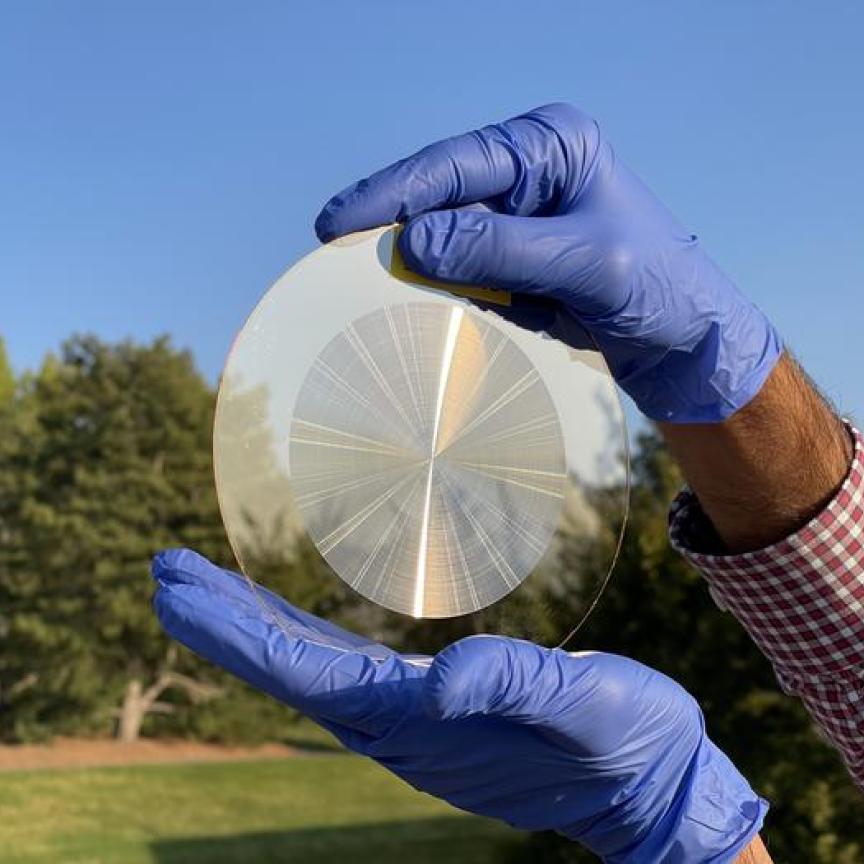Winner of Edmund Optics' 2013 Higher Education Global Grant Program for the Americas, Professor Simon Alford at the University of Illinois at Chicago explains his work on protein-protein interactions and the importance of the optical equipment from Edmund
A comprehensive understanding of cellular systems, whether in neuroscience or in other areas of cell biology requires our understanding of the interactions between proteins in real time and in their native environments. Classical imaging provides one window into this problem by determining structural interactions between elements of the cell. Similarly various approaches are being applied in vitro to determine rates and properties of molecular interactions. However, there is still a substantial lack of knowledge into the relationships between protein-protein interactions, their structure and inclusion into molecular machines, as well as the effects of their integration within the cellular environment. This is particularly true if proteins are membrane bound or trans-membrane.
We have studied a key interaction that modulates synapses, but that may also play a significant role in membrane trafficking in many environments. This is a direct interaction between the SNARE complex responsible for membrane vesicle fusion1 and a proposed competitive interaction between the putative Ca2+ sensor for fusion within presynaptic terminals – synaptotagmin – and an ubiquitous inhibitor of fusion – the G-beta-gamma subunit of G proteins2,3. The proteins involved in this interaction are associated with lipids in vivo. This is likely to modify substantially their interactions.
Various methods to measure protein-protein interactions suffer from three severe limitations. Firstly, interactions occur at microsecond rates, but traditional binding approaches often give no kinetic information at all. Secondly, almost all binding reactions are performed in vitro and typically in an aqueous environment; however, many such interactions occur in membrane environments. And thirdly, it is hard to translate findings in vitro to those obtained in vivo in live cells undergoing synaptic modulation.
Thus, we have developed an assay that allows their interaction in a lipid environment and in which we can also probe these interactions in situ in subcellular structures where they are naturally found and at rates that better represent what is occurring in cells.
Our approach (scalable to other applications) uses total internal reflection microscopy (TIRFm)4 to limit fluorescence very close to the plane of a glass cover slip. We can image a supported lipid bilayer without observing background fluorescence. This is formed by allowing liposomes suspended in aqueous medium to fuse onto glass. Prior incorporation of protein into liposomes ensures that the protein (in our case SNARE complex) is found in its native lipid environment. Aqueous solution may then be perfused over this bilayer as necessary.
We have also used fluorescence anisotropy. Fluorescence polarisation anisotropy5 is a particularly sensitive method to investigate binding interactions in which loss of polarisation of emitted light following polarised light excitation of a fluorophore represents movement between photon absorption and emission (typically 2-10ns). The more constrained (bound) the fluorophore, the greater the anisotropy in emitted light6. In combination these techniques allow us to investigate binding over a thin layer above a glass cover slip using light within membranes and in microsecond timescales (Figure 1).

Figure 1: G-beta-gamma interactions with t-SNARE complexes.
-
A) Our approach combines optical techniques. Below the coverslip, TIRFm imaging allows detection of binding to a lipid protein mix. Above a focused flash photolysis beam liberates reactants within tight spatiotemporal constraints.
- B) G-beta-gamma applied by pressure over a lipid membrane while imaging in TIRFm. Pressure pulses released ~5nL of solution with a pipette G-beta-gamma concentration of 10µM (final total protein assayed 50pMol).
- Bi) In TIRF mode a substantial fluorescence signal was recorded as the G-beta-gamma was released only when t-SNARE was included in the membrane.
- Bii) Data further analysed for changes in anisotropy. Anisotropy rose sharply at the start of the response in t-SNARE membranes then fell prior to loss of fluorescence signal.
- Ci) In absence of SNAREs, very little TIRF signal was revealed even though an identical quantity of protein was applied.
- Cii) No anisotropy was resolved. These data imply rapid binding followed by unbinding prior to the fluorescent G-beta-gamma leaving the TIRF field.
The SNARE complex mediates an extraordinarily rapid biochemical reaction that ensures vesicles fuse within hundreds of microseconds of a triggering event in which Ca2+ is believed to drive synaptotagmin binding to the core complex and to more closely interact with the cell membrane7. We have prior evidence that G-beta-gamma competes with synaptotagmin at SNARE complexes to inhibit synaptic transmission. This provides an interesting model to study the time-course of protein-protein interactions using optical approaches.
Specifically, we will introduce Ca2+ within very tight spatiotemporal constraints using ultraviolet light based photo-uncaging. Thus a second imaging system is introduced above the preparation that allows a focused UV laser spot to be applied with simultaneously imaging using TIRFm from below the plane of the cover slip.
In combination with synaptotagmin, we hypothesise that this photo-released Ca2+ will compete with fluorescent G-beta-gamma for binding to these SNARE complexes. In this way we propose to determine rates of interaction in the microsecond timescale. Furthermore, this same optical approach may then be applied directly within cells that are grown in culture over the TIRFm field. This will allow us to directly compare binding in cells and in vitro, and in real time as interactions occur.
--
References
- Sutton, R. B., Fasshauer, D., Jahn, R., and Brunger, A. T., Nature 395, 347–353 (1998).
-
Yoon, E.-J., Gerachshenko, T., Spiegelberg, B. D., Alford, S., and Hamm, H. E., Mol. Pharmacol. 72, 1210–1219 (2007).
-
Gerachshenko, T. et al., Nat. Neurosci. 8, 597–605 (2005).
-
Gingell, D., Heavens, O. S., and Mellor, J. S., J. cell science 87, 677–693 (1987).
-
Perrin, M. F., J. Phys. Radium 7, 1 (1926).
-
Lentz, B. R., Chem. Phys. Lipids 64, 99–116 (1993).
-
Chapman, E. R., Nat. Rev. Mol. Cell Biol. 3, 498–508 (2002).

